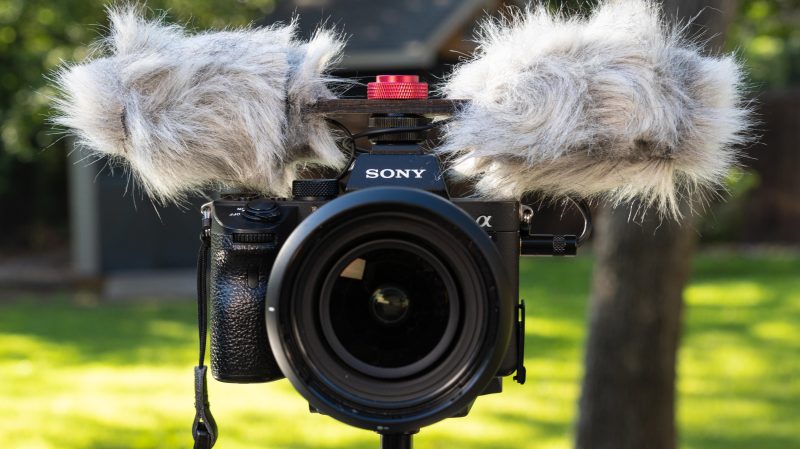Typically, the audio coming out of your camera is not of the greatest quality. An external mic is generally a great upgrade, and this build from [DJJules] aims to be just that.
It’s a stereo mic setup based on the work of the Office de Radiodiffusion Télévision Française, or ORTF. The ORTF stereo technique defines using two cardioid mics pointing left and right at a seperation of 110 degrees and 17 cm apart, which captures a quality stereo field that also sounds good when presented as a mono mixdown.
The build uses a simple wooden frame to hold two electret mic capsules in the required orientation. They’re wired up to a 3.5mm jack so they can be plugged straight into a mic input on a DSLR or other similarly-equipped camera. Hair curlers covered in faux fur are used as a wind shield for the mics, and gives the build a properly professional look. The frame is also given a mount so it can easily sit on a camera’s cold shoe fitting. Alternatively, a screw mount can also be used.
Good audio is absolutely key to making good content, and having quality mics is definitely what you need to achieve that. We’ve featured some other great DIY mic builds over the years, too. Video after the break.
















Nice and low profile, and looks solid. My shotgun mount is way too high over the camera, gets in the way.
Great project. A mono shotgun on the camera is often underwhelming; it’s not stereo and it’s usually too far back to effectively isolate the dialogue. A decent stereo rig like this ORTF array will at least pick up a nice sense of the space, and will complement any isolated dialogue pickup from lavalier or boom mics.
I did this sans fur on top of a pair of heavy Koss headphones in the early 70’s. Recorded audio new years eve at the fishing pier in Naples Florida. I now wonder what’s still there. It made a very effective hearing “aid” with only the rear sounds being vague in direction. Kinda hard to put a binaural head on today’s smaller camerae. Better to put the camera in the head, even better 2 for 3D stereo vision as well.
So he literally just soldered a couple electret mics to a jack then plugged them in? Groundbreaking!! (I mean, good for him for building what he needed, but the emphasis on ORTF or whatever distracts from the fact that he just plugged in some mics). Must be a slow news day…
I think that the focus here is not on the mic. component itself but the mechanical construction. Which has some interesting aspects and choice of materials. Also, it can be very enlightening to see that not everything needs to be high tech to be useful.
Cool project!
Give the poor guy a break, he’s overshadowed by all of =your= accomplishments and stories on Hackaday.
For the life of me, I can’t figure out what he means by “PIP” or “PIP Power” in the instructable. I’d guess from context that he’s suggesting power transfers over the audio jack to the microphones?
Many consumer or “prosumer” cameras and recorders are designed to accept two-terminal electret mics, like the ones in this project. These require a small positive voltage (usually around +3 to +5v) connected through a small resistance (something like 2kohm) which is the drain load for the FET inside the electret capsule. This is a fairly common standard.
Many people think that microphones are voodoo. This project shows how simple it is to build useable mics, and it provides a simple solution for effective wind protection. Plus it gives an important look into a versatile stereo recording method (ORTF) that not many are aware of.
What’s not to like?
Sorry, forgot the definition: PIP means Plug-In Power. – the name given to this form of biased mic input.
@KenN again, sorry said: “Does anything suck harder than this uneditable HaD forum software?”
This is not “forum software”, it is a “comment” or “conversation” system that I believe is somehow associated with a SAAS system called “Jetpack for WordPress”.[1] I think the comment system here on HaD is the second worst I have endured. IMO by far the worst comment system in the world is called “OpenWeb”.[2] OpenWeb is used as Yahoo!’s comment system and many other big sites use it as well. OpenWeb is so bad it makes HaD’s comment system look brilliant in comparison. So remember, If you don’t like the comment system here on HaD, it could certainly get worse!
* References:
1. Jetpack For WordPress – Official Site
https://jetpack.com
2. OpenWeb
https://www.openweb.com